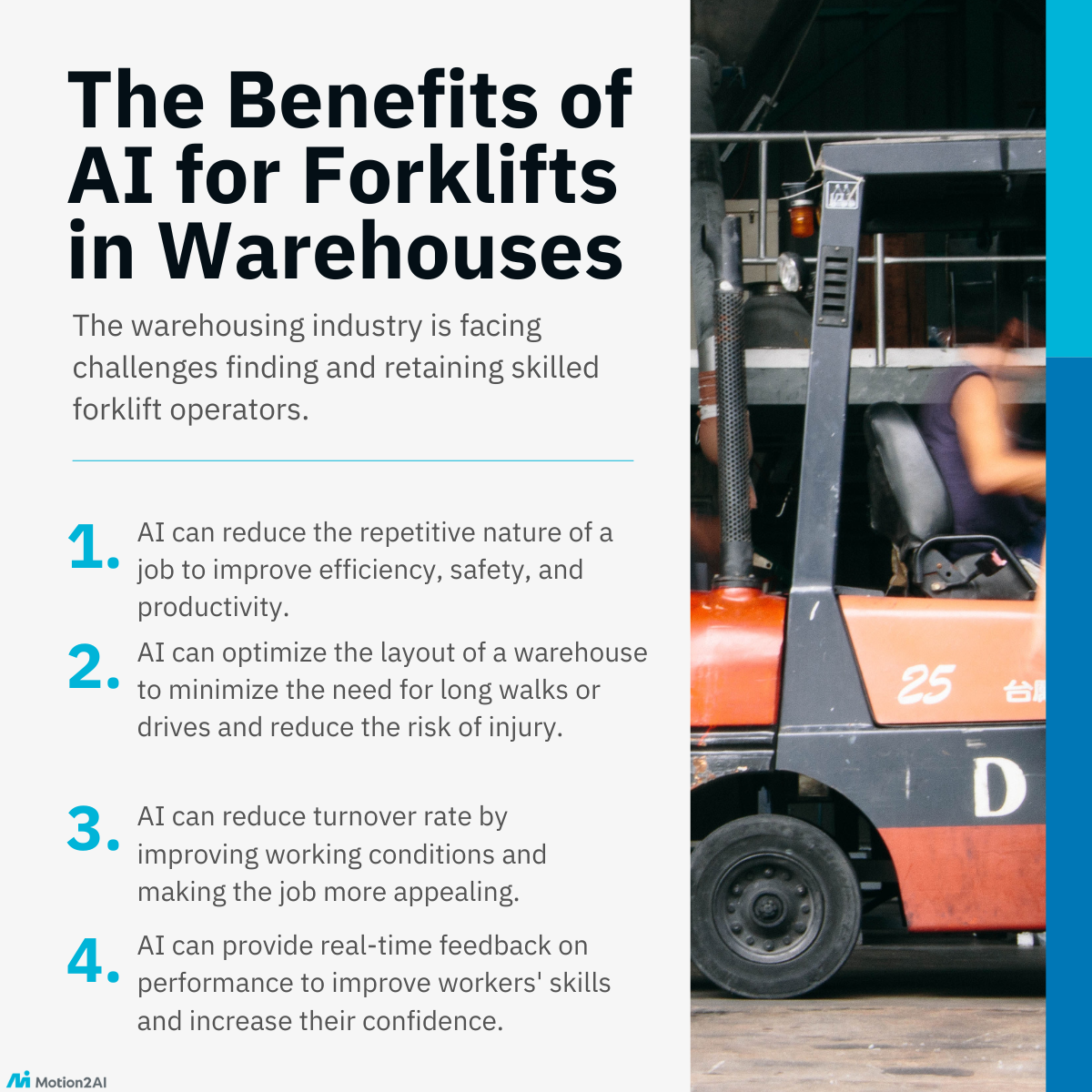The warehousing industry is facing a severe challenge in finding and retaining skilled forklift drivers. This is not only a problem for companies looking to increase productivity, but it is also a threat to the safety of workers in the warehouse. Many companies are turning to artificial intelligence (AI) for help to address this issue.
Rising labor shortage
Forklift driver labor challenges in the warehousing industry can be attributed to several factors. First and foremost, the job requires a high level of skill and expertise to operate a forklift safely and efficiently. In many cases, there is simply a need for more qualified workers to meet these requirements, making it difficult for companies to fill these positions.
In addition to the shortage of skilled workers, there is a high turnover rate among forklift drivers in the warehousing industry. This is partly due to the job's physically demanding nature and the often required long hours and repetitive tasks. As a result, many workers leave the industry searching for better working conditions, creating a constant need for new hires.
According to nearly 200,000 forklift operators resumes, 33% of forklift drivers leave their job within the first year.
💡 The warehousing industry is facing a high turnover rate of skilled forklift drivers because many jobs are physically demanding or require higher skills.
The challenges faced by the warehousing industry are compounded by the increasing use of automation and technology in the workplace. For example, many companies are implementing robotic systems to automate manual tasks, making a forklift driver's job even more demanding if the automation needs to be better integrated into the overall workflow. At the same time, there is also increasing pressure to improve productivity and reduce costs, which puts even more pressure on forklift drivers to perform at their best.
AI as a solution
However, AI is offering a solution to these challenges by automating many of the tasks performed by forklift drivers, freeing them up to focus on more strategic tasks that require their expertise and experience. For example, AI-powered systems can optimize the movement of goods within a warehouse, reducing the need for manual intervention and increasing efficiency. This helps to increase productivity and improves safety by reducing the risk of human error.
In addition to automating manual tasks, AI can also help improve the working conditions for forklift drivers by reducing the job's physical demands. For example, some AI-powered systems are designed to automate the loading and unloading of goods, reducing the need for manual handling and improving safety. Additionally, AI can be used to optimize the layout of a warehouse, which can help to minimize the need for long walks or drives and reduce the risk of injury.
💡 AI can reduce the repetitive nature of a job to improve efficiency, safety, and productivity.
AI can also help to address the shortage of skilled workers by providing training and support for new hires. For example, some AI-powered systems are designed to provide real-time feedback to workers on their performance, helping to improve their skills and increase their confidence. Additionally, AI can give training simulations to help prepare workers for the job's demands before they start working.
AI can help reduce the turnover rate among forklift drivers by improving working conditions and making the job more appealing. For example, AI can help reduce the repetitive nature of the job by automating routine tasks, freeing workers to focus on more strategic tasks. Additionally, AI can help reduce the job's physical demands, making it more appealing to workers looking for better working conditions.
💡 AI can reduce turnover rate by improving working conditions and making the job more appealing.
The warehousing industry faces significant challenges when finding and retaining skilled forklift drivers. However, AI is offering a solution to these challenges by automating manual tasks, improving working conditions, providing training and support, and reducing the rate of turnover. By embracing AI, companies can improve productivity, safety, and the overall working conditions for their workers, which will help to attract and retain the best talent in the industry.
